Neuropsychologist Diego Alvarado reports in this article on what the main effects of music therapy are in people affected by dementia, while also comparing the two types of music therapy most widely used in the context of musical therapies, their advantages and benefits.
What is dementia or major neurocognitive disorder?
Currently called by the DSM-5 major neurocognitive disorder, dementia presents as one of the most serious health problems in the world due to its very high prevalence and great economic and social cost. Worldwide there are more than 55 million people living with some form of dementia today, 60% of whom live in low- and middle-income countries; more than ten million new cases emerge each year (World Health Organization [WHO], 2023).
Its prevalence doubles from age 65, affecting 5–8% of individuals between 65 and 70 years, 15–20% of those over 75 years, and 25–50% of those over 85 years (Custodio et al., 2017). Although age is the greatest risk factor for dementia, it is not an inevitable consequence of aging nor does it affect only older people (Alzheimer Europa, 2019).
The pathology is a progressive chronic neurodegenerative process; the psychological and behavioral symptoms of dementia cause great suffering for both the patient and the caregiver, who are usually immersed in a fragile physical and social environment that worsens cognitive and functional decline, precipitating institutionalization (Mazorra, 2022).
Although pharmacological treatment has been the first-line approach, the high economic cost, the slow patient improvement and the maintenance of a low quality of life during treatment have highlighted the need to maintain parallel approaches that supplement interventions with a quality-of-life focus aimed at improving patients’ emotional state.

Subscribe
to our
Newsletter
The impact of music on the brain
Neuroimaging shows that music is capable of activating multiple areas of both cerebral hemispheres and that this activation occurs even if a person is not listening to music but simply imagining it.
- The frontal lobe, responsible for functions such as decision making, thinking and planning, is stimulated when listening to music.
- The temporal lobe processes and analyzes musical patterns, as well as pitch, melody and rhythm.
- The cerebellum coordinates movements in stores of muscle memory (such as playing the piano). These memories remain intact in people with dementia.
- The corpus callosum enables communication between the two cerebral hemispheres, allowing coordinated movement of the body such as, in the case of music, using both hands when playing instruments.
In general, each structure is involved in at least one or more tasks, so it can be concluded that there is massive activation suggesting that music is an enriching and meaningful stimulus for brain function (Sacks, 2006).
Considering the above and within the clinical setting, music therapy emerges as an alternative that harnesses the great impact of music on brain physiology through structured programs of stimulation with sounds, rhythms and melodies to achieve improvements in anxious-depressive symptoms, impulse dyscontrol and low social adaptation in people with dementia, being a promising proposal due to the greater cost-benefit compared to traditional pharmacological therapies whose annual costs per person amount to more than €37,000 in Spain (Ministry of Health and Consumer Affairs, 2017).
Music therapy for the treatment of dementia
What is music therapy?
Music therapy is defined as the use of musical elements such as rhythm, melody and tonality for rehabilitation and/or relaxation purposes, and can be of two types: active or passive.
Treatment of dementia with music therapy should be personalized according to individual preferences. Although cognitive stimulation with music generally has observable short-term effects, recent studies on the effectiveness of music therapy show that adherence plays a key role in maintaining those effects long-term. Likewise, it is important to determine whether a person has a greater affinity for active music therapy (which involves movement) or passive music therapy (which consists of listening).
Types of music therapy
1. Active music therapy
It requires qualified professionals and participants must have intact motor abilities and not suffer from other conditions that limit movement.
Its benefits are wide-ranging:
- Greater self-esteem;
- better impulse control;
- stimulation of socialization capacity in group dances;
- and greater cognitive flexibility when improvising dance steps and varied movements.
Active music therapy has notable effects on cognitive activation, while the effects of passive music therapy favor greater self-control, calm and the capacity for self-regulation. This indicates that each subtype of music therapy may be useful depending on the stage the person is going through at a given time in the disease, and personal characteristics and previous experience with listening or creating music may influence therapeutic success. Likewise, positive effects are present in one dimension or another, so both subtypes of music therapy can be used in the management of dementia.
2. Passive music therapy
It requires virtually no external resources, facilitates abstraction and invites aesthetic reflection, which generates a great cognitive stimulation experience with music, only requiring a sustained attention capacity within the normative threshold.
Benefits of music therapy for the treatment of dementia
When compared, both report wide benefits in improvements within the behavioral, emotional, psychological and social areas. In addition, both have a positive impact on improvement of affective symptoms at a clinical level, promoting a positive emotional state that continues even after the intervention programs have ended.
Active music therapy has notable effects on cognitive activation, while the effects of passive music therapy favor greater self-control, calm and the capacity for self-regulation. This indicates that each subtype of music therapy may be useful depending on the stage the person is going through at a given time in the disease, and personal characteristics and previous experience with listening or creating music may influence therapeutic success. Likewise, positive effects are present in one dimension or another, so both subtypes of music therapy can be used in the management of dementia.
Active music therapy has notable effects on cognitive activation, while the effects of passive music therapy favor greater self-control, calm and the capacity for self-regulation.
This indicates that each subtype of music therapy may be useful depending on the stage the person is going through at a given time in the disease, and personal characteristics and previous experience with listening or creating music may influence therapeutic success. Likewise, positive effects are present in one dimension or another, so both subtypes of music therapy can be used in the management of dementia.
Recent studies on the effectiveness of music therapy in dementia indicate that listening to music can be both a protective factor and a therapeutic instrument (Witte, 2022), with its effects on cognitive functions documented even hundreds of years ago in cultures such as those in the East, where music sought to nourish ideas, generate reflection and improve mental clarity, having effects similar to what cognitive stimulation aims to achieve in many cases of dementia.
This is, without a doubt, also applicable to active music therapy, where bodily movement heightens awareness of the environment, stimulates the ability to communicate with others and reduces cortisol levels, whose prolonged elevation affects planning and organizational functions typical of the frontal brain areas.
In dementias we find significant frontal deterioration. However, with the application of music therapy this area is stimulated and the deterioration appears to slow down. Evidence of this is seen in the improvements achieved by some patients in aspects such as reasoning, being able to adapt to dance steps, anticipate the continuation of a rhythm and process song lyrics with greater fluency (Bleibel, 2023).
In subsequent interventions, greater relaxation is observed during activities, increased willingness to participate and positive changes in functional personality traits that translate into greater efficiency in activities of daily living, as well as improvements in quality of life.
The initial effects are variable. In some patients positive effects have been reported from the first music therapy sessions, while in others there are no changes. Prior relationship with music seems to be a relevant factor. Even so, as interventions progress the majority report one or more positive effects regardless of the style of music listened to or the rhythms and melodies used. Finally, caregiver reports indicate that in the long term there is a positive perception of the activity, either due to the social component of the music therapy routine or to the direct effects of the music.
No less significant is the change in caregivers’ lives, who report improvements in the quality of communication with patients and a positive perception of their work as caregivers, being able to relate to other people in an emotionally close way when there are no factors that precipitate anxiety or depression events. In this regard, carrying out other activities that are shared between caregiver and patient positively complements the relationship and helps to alleviate difficulties that arise in caregiving contexts.
Music therapy or complementary therapies for the treatment of dementia
Like music therapy, there are other types of therapies that use elements such as aroma (aromatherapy), acupuncture, herbal medicine or relaxation techniques to treat symptoms such as memory loss in Alzheimer’s disease (AD), depression and impulsivity, with subjective improvements reported after their use and partially relieving the psychological distress experienced during the course of dementia.
The main difference lies in the quality of the evidence from studies that have examined these therapies, showing low rigor in doses and application times, or lack of guidelines for optimal patient monitoring. On the other hand, music therapy has demonstrated that, with protocols, adequate application times and adherence, it is possible to study its effects in a quantifiable and concise way.
Another advantage is that music is universal, so most people will already have prior exposure to certain patterns included in programs, making it easier to adapt to the implemented dynamics and, thus, to participate.
How to implement music therapy in cognitive stimulation for people with dementia?
Music therapy is an effective tool for people with dementia, as it activates areas such as:
- The hippocampus, which is part of the limbic system and is specifically responsible for the process of retrieval and storage of information;
- the limbic system, related to emotional responses;
- and the prefrontal area, collectively related to higher cognitive functions.
In early stages activation activities such as singing, dancing, playing instruments and listening to songs can be carried out; while in moderate and advanced stages, the above can be done with sensory stimulation as a base, prioritizing music that is meaningful to the patient.
Strategies can also include:
- Identify songs that have been significant in the patient’s life (traditional music, religious music, hymns, etc.).
- Together with family members, create selected playlists.
To reinforce interventions it is necessary to incorporate the use of music into daily routines. For example, use music at specific times of the day, such as lively melodies and dynamic rhythms in the morning, and relaxing music at night.
It is also relevant that it is accompanied by a multisensory intervention, physical exercise and other types of cognitive stimulation according to the patient’s needs.
An interesting strategy is to try to remember the lyrics of an important song and associate them with a lived event, which serves as a practical memory exercise. As well as singing in a group or completing the lyrics of familiar songs, for the stimulation of language.
To stimulate attention and motor coordination you can work through the guided playing of musical instruments, which is useful whether the person has experience in this field or not. This can also be used in a free play modality if the intention is to work on motor agitation or anxiety symptoms.
Conclusions
Music therapy is an emerging discipline that requires further studies and evaluation alongside other variables within interventions. Although to date the evidence indicates broad effectiveness of the therapies, which include it as part of treatment programs for people with dementia, its application should be carried out within an interdisciplinary framework in coordination with occupational and neuropsychological therapies.
The reinforcement that caregivers must provide is also relevant, since including music in daily life helps to keep the focus of the intervention present and to enhance what has already been worked on in therapy.
Bibliography
- Alzheimer Europa. (2019). Demencia en Europa. Anuario 2019: Estimación de la prevalencia de demencia en Europa. Alzheimer Europa. https://www.alzheimer-europe.org
- Bleibel, M., El Cheikh, A., Sadier, N. S., & Abou-Abbas, L. (2023). The effect of music therapy on cognitive functions in patients with Alzheimer’s disease: A systematic review of randomized controlled trials. Alzheimer’s Research & Therapy, 15(1), 65. https://doi.org/10.1186/s13195-023-01214-9
- Mazorra Ruiz, D. (2022). Treatment of Alzheimer’s and Parkinson’s, limitations. Search for new therapeutic targets and drugs [Master’s thesis, Universidad Nacional de Educación a Distancia]. UNED Repository. http://creativecommons.org/licenses/by-nc-nd/4.0info:eu-repo/semantics/openAccess
- Ministry of Health and Consumer Affairs. (2017). Comprehensive Plan for Alzheimer’s and other Dementias (2017-2023). Ministry of Health and Consumer Affairs.
- World Health Organization. (2023). [Document title if available]. World Health Organization. https://www.who.int
- Sacks, O. (2006). The power of music. Brain, 129(10), 2528-2532. https://academic.oup.com/brain/article-abstract/129/10/2528/292982
- Witte, M., Pinho, A. D. S., Stams, G. J., Moonen, X., Bos, A. E. R., & van Hooren, S. (2022). Music therapy for stress reduction: A systematic review and meta-analysis. Health Psychology Review, 16(1), 134-159. https://doi.org/10.1080/17437199.2020.1846580
If you liked this blog post about dementia and music therapy, you will likely be interested in these NeuronUP articles:
“This article has been translated. Link to the original article in Spanish:”
Musicoterapia en el tratamiento de la demencia: Beneficios, tipos y su impacto en el cerebro

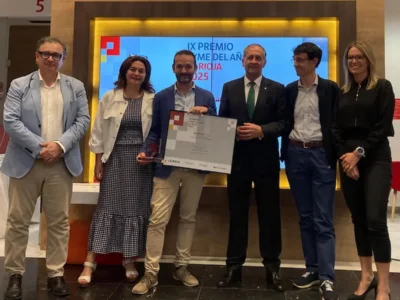
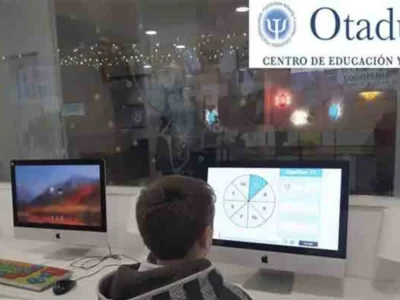

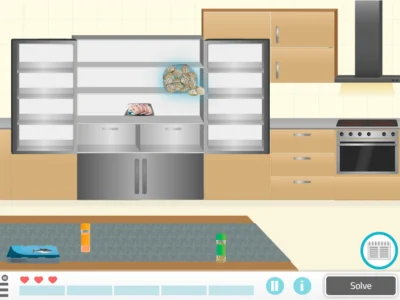
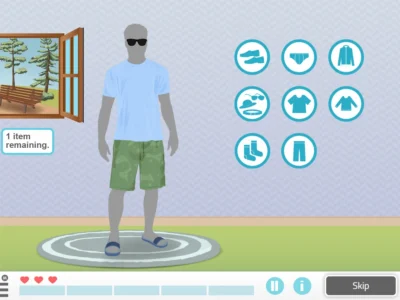
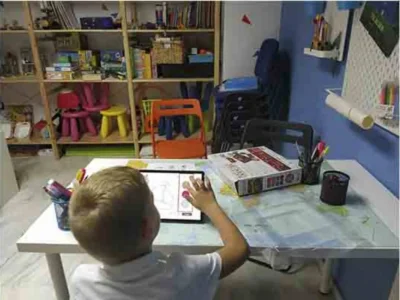
Leave a Reply